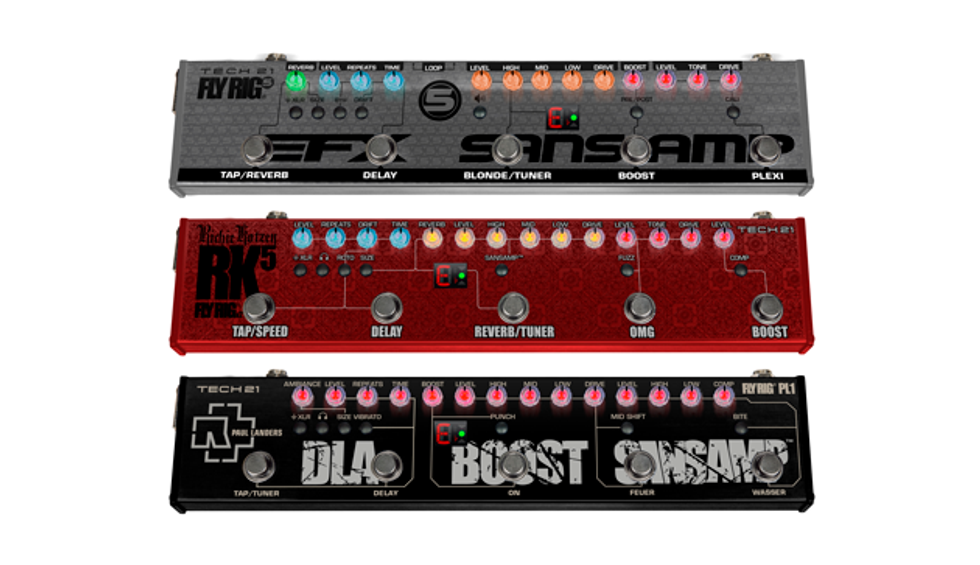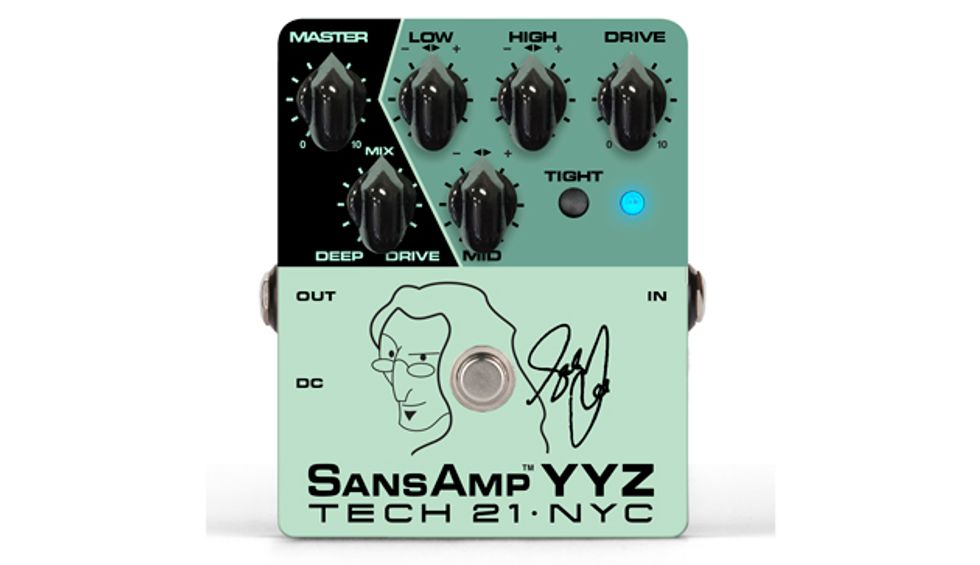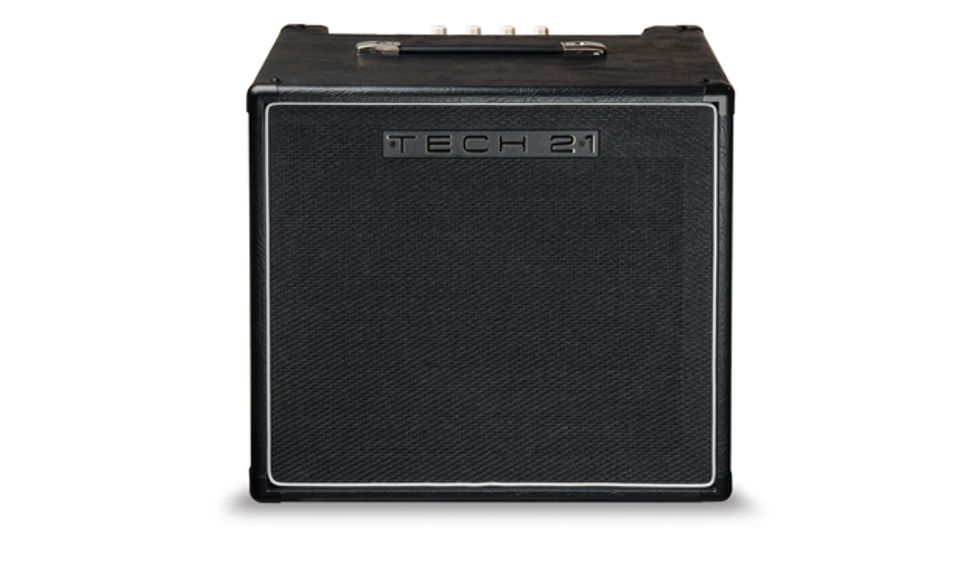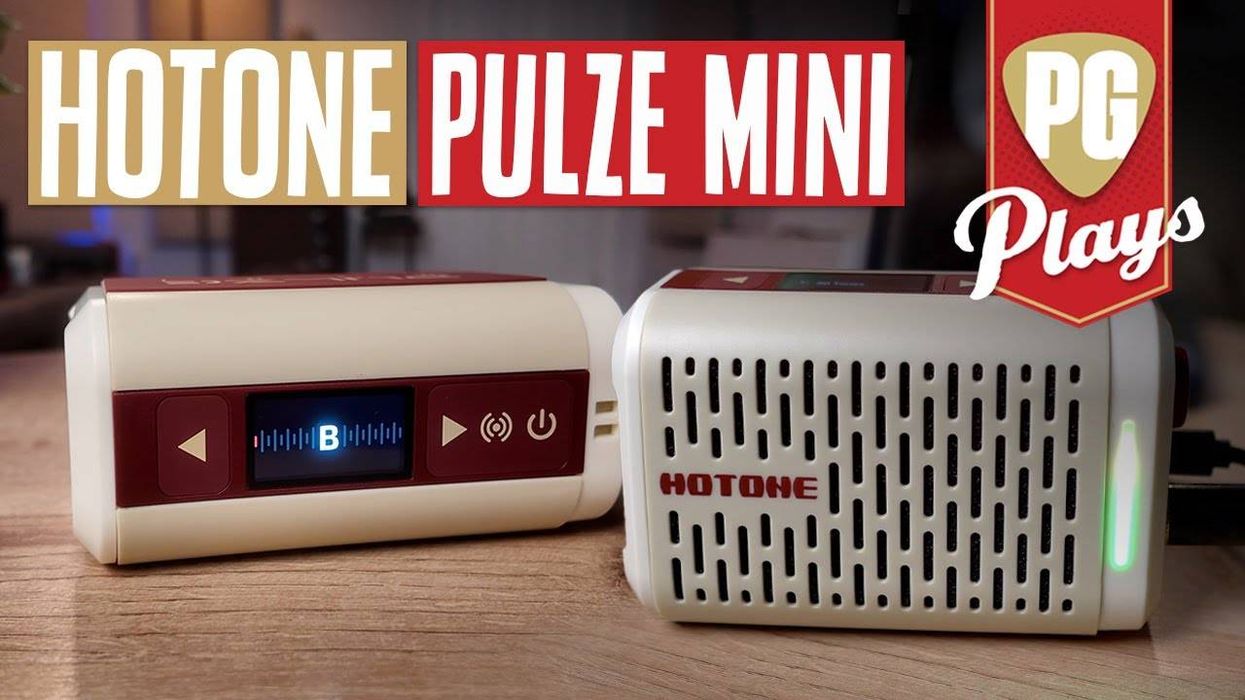Clifton, NJ (January 23, 2019) -- The original Fly Rig, introduced in 2014, was a true gamechanger for players in all categories, from touring pros to bedroom hobbyists. At a time when pedalboards were expanding and backs were breaking, the innovative Fly Rig enabled players to slim down without sacrificing great tone, and travel without fear of baggage surcharges and dreaded mystery backlines.
The Fly Rig 5 v2 retains the same SansAmp heart, Plexi/Cali distortion and Delay, but adds a few twists and turns within these sections. New features include switchable Pre/Post Boost up to 12dB, an independent reverb with choice of room size, an effect loop, a tuner, headphone capability and an XLR Output.
Since the debut of the original Richie Kotzen RK5 Signature Fly Rig, Richie’s needs have changed, both on and off the road. New to this version is an on/off push-button for the SansAmp section. Richie previously would use his RK5 both with and without the SansAmp engaged. Currently, it’s either on or off during stage shows, so he no longer needs a dedicated footswitch. Following the same form factor as later Fly Rigs, the RK5 v2 includes a tuner, headphone capability and an XLR Output. Effects include delay, independent reverb, pre-boost up to 12dB, compression, fuzz, rotary speaker, and Richie Kotzen’s signature OMG overdrive.
The Paul Landers PL1 Signature Fly Rig offers two SansAmp channels, one clean (Wasser) and one dirty (Feuer). It also has an independent dual-mode Boost function: a post-SansAmp positive volume boost up to +6dB and “negative” boost down to -10dB and a Punch mode to enhance solos with a wide mid-range boost. Effects include Delay with Tap Tempo, Vibrato, and Ambiance.
All utilize included 9V DC Universal Power Supply: Model #DC9. “Auto-switching,” self-adjusting 100V-240V, 200mA with interchangeable international prong assemblies for use anywhere in the world.
Wanting to streamline and simplify his gear for new projects, Geddy Lee partnered with Tech 21 to design a signature rackmount SansAmp, the GED-2112. This challenging collaboration involved distilling a boatload of equipment into a single rackspace. Stepping up to yet another challenge, Tech 21 further distilled the rackmount into a super-compact, portable pedal format. The SansAmp YYZ offers Geddy’s core sound and the versatility for many different styles.
Features include all-analog SansAmp technology to record directly and enhance previously recorded tracks. For live performances, the SansAmp YYZ can drive a power amp and speakers, augment an existing amplifier set-up, or run directly into the mixer of a PA system. A Mix control blends the ratio of high-end studio clean and dirty bass tube amp tones. The Tight button adds definition to notes in cleaner settings and make distorted tones snappier. Other features include a Drive control, active 3-band EQ and Master Volume. Operable with 9V alkaline battery (not included) or optional DC power supply.
The Power Engine Deuce Deluxe is a pumped up version of Tech 21’s former Power Engine 60, which was introduced back in 2001. Tech 21’s original concept for a FRFR speaker cabinet specifically designed for guitar and bass evolved from an overwhelming amount of inquiries as to which amp would be best to use with a SansAmp. Enter the light bulb.
Fast forward to today, this new version consolidates a feature set that can be used for both guitar and bass. The handsome 1x12 rear-ported cabinet is capable of delivering 200 Watts of transparent power with convenient, on-board 3-band, active EQ controls to compensate for challenging venues. Other new features include low and high pass filters, defeatable tweeter, an extension speaker output, headphone output, auxiliary input, and worldwide power supply.
You can use the Power Engine Deuce Deluxe with any direct recording device or pre-amp --analog or digital, tube or solid state --from any manufacturer. You can take your Fly Rig/SansAmp or preamp gizmo du jour, with all those great direct sounds you’ve spent so much time creating, out to a gig and simply plug into the Power Engine Deuce Deluxe. It will amplify all your personal settings without giving you any additional tone. So there's no need to labor over readjusting all your parameters that would otherwise be colored by a conventional amp.
An optional 1x12 extension speaker cabinet, Model EX112, is an excellent complement for both the Power Engine Deuce Deluxe and their VT Bass 200 combo amp. Under 25 lbs, it is available with a black grille to match the Power Engine or blue to match the VT Bass 200.
For more information:
Tech 21 NYC










![Rig Rundown: AFI [2025]](https://www.premierguitar.com/media-library/youtube.jpg?id=62064741&width=1245&height=700&quality=70&coordinates=0%2C0%2C0%2C0)














